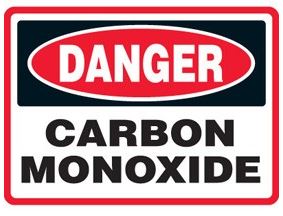
You may have installed a superior security system in your home and ensured that no thieves can get in by securing all of your home's entrances. But a threat can lurk from the inside of your home, waiting until you're not paying attention before it causes serious damage to you and your family's health. That threat is carbon monoxide.
This threat is not one to be underestimated; CO is known as a 'silent killer', because it has no odor or taste, and cannot be seen. Also, carbon monoxide doesn't offer its victims much warning before causing illness or death.
Symptoms of Carbon Monoxide Poisoning
With mild exposure, a victim may feel ill and experience symptoms similar to that of the flu. These symptoms can include fatigue, headache, nausea and vomiting. Moderate exposure sees symptoms intensified, with increased heart rate, severe headache, confusion and drowsiness. When extreme exposure has occurred, convulsions, unconsciousness, cardio-respiratory failure and death can be the result.
Another frightening aspect of carbon monoxide poisoning is that although a victim may know something is wrong, they may not be able to save themselves. This is because CO gas causes disorientation in addition to the symptoms previously mentioned.
Carbon monoxide gas is also heavier than air, which means that it will collect near the ground. As such, pets and young children will feel the gas's effects sooner than adults. However, adults who are nearer to the ground, such as any who may be asleep on a couch can also be at high risk.
Avoiding CO Poisoning
The threat of being poisoned by carbon monoxide can be completely avoided with one thing: prevention. Preventing CO poisoning means being aware of not only the symptoms, but understanding the potential risks for poisoning with the appliances in your home.
Unburned fossil fuel is what can cause carbon monoxide gas to be released. And so any appliances which use these fuels must be inspected on a regular basis to ensure they are in safe and proper working order. This includes vehicles, clothes dryers, water and space heaters and portable generators.
Bad Weather Can Increase Your Risk
The most significant risks of CO poisoning can occur during times of bad weather. This is because bad weather can cause power outages. It can also cause homeowners to bring equipment inside that is normally stored outside, in order to prevent property damage.
Experts warn that in times of bad weather, any generators should be kept outdoors, and at least 25 feet away from any home and/or any windows and doors that may be open.
The fossil fuels which can cause poisoning can also be found in the charcoal used in portable barbeques, which are often used in power outage or bad weather situations. Therefore, homeowners are warned not to cook with these barbeques indoors. In fact, no other gas-powered equipment should be brought into the home for any reason.
Although it may not be comfortable, reducing your risk of carbon monoxide poisoning can be as simple as allowing for air flow within the home by keeping a window slightly open.
The CO Alarm
If you have yet to purchase a CO alarm, it's important to ensure that any alarm you buy has the UL mark and says "Single Station Carbon Monoxide Alarm" beside it. The reason to look for the UL mark is because this certification means that the alarm has been designed to detect elevated CO levels as well as sound an alarm when these levels are detected.
The UL certified alarm also includes a reset button which allows the alarm to be silenced. However, the alarm will sound again in 6 minutes should it detect the same high CO levels in the home.
But no CO alarm will work as it should unless it's been maintained properly. Instructions for proper maintenance can be found in the booklet that came with the alarm.
When the Alarm Sounds
Should your CO alarm go off, the first thing to do is to reset or silence it. Then, it's imperative that everyone in the house get outside into the fresh air. Once outside, a mobile phone can be used to call emergency services, who can treat any members of the household who may have been exposed to carbon monoxide gas.
Guest author Emma Prior writes on a variety of topics related to home security. She is a frequent contributor at The HSS Geek, a site dedicated to helping educate consumers on the topic.
